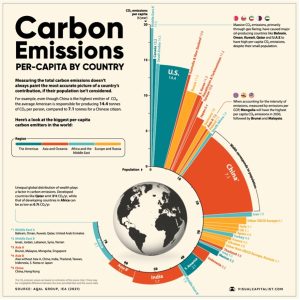Daylight shining on the Green Economy.
As we approach the winter solstice in Australia, business[1] and government[2] are beginning to see the light regarding the opportunities for Australia in the green economy. However, long shadows cast from recent bi-lateral disengagement are limiting the benefits from greater collaboration with our number one trading partner as it rolls out its new high-quality growth agenda[3].
So how can Australian businesses benefit from what China is doing? And what will stop this from happening?
The global transition towards a green economy.
The advancing pace of nature’s reaction to our historical carbon excesses is reinforced regularly by new reports from the IPCC[4], IEA[5], OECD[6] the World Bank[7] and the World Economic Forum[8].
China has already implemented a raft of legislative and policy guidelines[1] and has let its business community know that BAU is not an option.
Just as our collective global ambitions for limiting greenhouse gas emissions requires China’s accelerated participation, so too Australia’s ambitions as a Green Energy Superpower are inextricably linked to China.
To look away is ignoring our important role in global outcomes.
What China is doing.
It was obvious from ACBC’s recent delegation to China that China is on the move. Central Government directives have been picked up by Provincial and City governments and business is following the lead by:
- cutting energy consumption and pollution
- improving the quality of imports and exports
- attracting and utilising quality foreign investment; and
- expanding market access
The recent influx of international delegations and deal flow is testament to this with everyone from Africa, Brazil, Argentina, Honduras, Saudi Arabia, UAE, Germany, France, Spain, Singapore, Malaysia, Indonesia, and the Philippines in there and working it.
Not to mention China’s outbound activity, new diplomatic postings and investment activity under its Global Development Initiative.
China is engaging with the EU on Carbon Tax, Singapore on Carbon Finance and building high-speed rail and renewable energy infrastructure in Indonesia.
Where China is going.
China has a huge task ahead of it to decarbonise. Its Peak Carbon goals for 2030 are on a structured pathway for its Net Zero ambitions by 2060. How it does this whilst maintaining its economic growth agenda is the trillion-dollar question.
What is certain is that they are well on their way with China adding 62GW of solar and wind power generation in the first 4 months of 2023, three times the same period last year[2].
This bodes well for lifestyle and air quality for Chinese citizens, but also for Australian companies.
But US$5-20 trillion is needed to be invested by 2050 to achieve its net zero goals.
With an ambition for 300 million electric vehicles (EVs) by 2030, let alone the conversion of buses, trucks and urban e-mobility, the ability to make a market is one of the reasons China has become a leader in the supply chains for these new industries.
But it can’t do it alone.
Economic benefits to Australia.
China’s compulsory carbon markets and participation in ‘offshore’ voluntary markets are driving capital flows into and out of China.
Aware also not only of the scale of its own challenge, but of that of the whole world, China is also ‘exporting’ its successful model for industrial transformation and supply chain efficiencies to other international markets.
Again Brazil, Malaysia, Indonesia, Saudi Arabia and many other countries are open to learning from China and applying their economic development zone models in their sovereign markets to benefit from the advancement of their domestic economic complexity.
Australia’s challenge is whether any of these investment flows will make it to Australia.
Australia, like every other country, has an infrastructure challenge to deliver on its decarbonisation transition. Energy generation, storage, transmission all require capital and capabilities to implement.
And a progressive regulatory regime.
And with our natural advantage of space for renewable generation, we could be doing much more with our green electrons.
Recent submissions to government policy development highlights our business communities’ embrace of this transition.
Greater collaboration.
Australia has a wealth of intellectual property to contribute to the solutions required to accelerate the transition. Some are already in market. Some are still sitting in the shelves of our academic institutions or US-focussed venture funds.
So how do we overcome the dialogue divergence?
The industry needs to lean back into re-engagement.
In ACBC’s report on the findings from its recent delegation, and as part of the outcomes of our ongoing Green Channel program activity, ACBC set out some very clear options for encouraging greater collaboration.
From cross-border program management, to industry-focussed in-market discovery tours, ACBC’s strategic relationship with the China Green Parks Association provides Australian business (and government) access to over 200 industrial parks in 20+ Provinces all focussed on delivering on China’s ‘high-quality growth’ agenda.
And all the businesses in those parks, and the local governments they work with, are reaching out for international participation in the solutions to deliver on China’s dual carbon goals.
And many of the companies in those parks are already in Australia in the many existing Chinese investments in mining, resources, energy , construction, transport, finance and agribusiness.
We don’t have to look too far, we just need to recognise the opportunity (and benefit) of re-engaging.
So let’s work together to achieve net zero faster.
Join the Green Channel programs near you. To contribute to ACBC’s Green Channel program, contact anthony.coles@acbc.com.au or speak to your local ACBC branch representatives
[1] China Carbon Peak 2030 Action Plan
[2] Wall Street Journal June 2023
[2] SA Govt Green Economy ambition
[3] China Govt on quality growth Mar 2023
[5] IEA Energy Investment Report June 2023
[7] World Bank Climate Risks 2023
[8] WEF 2023 Climate Risks Report
[9] China Carbon Peak 2030 Action Plan
[10] Wall Street Journal June 2023
Anthony Coles
Chair, ACBC Net Zero Working Group


